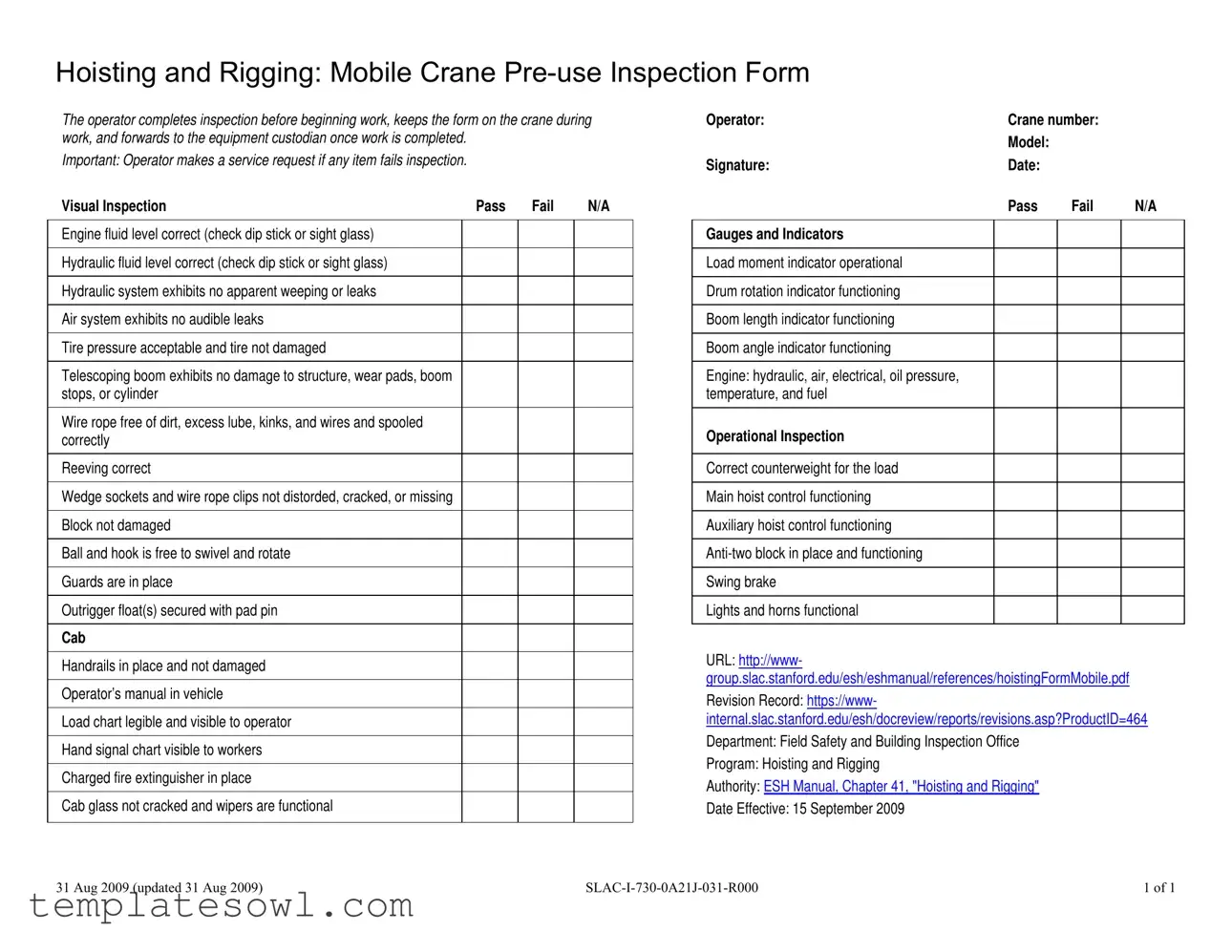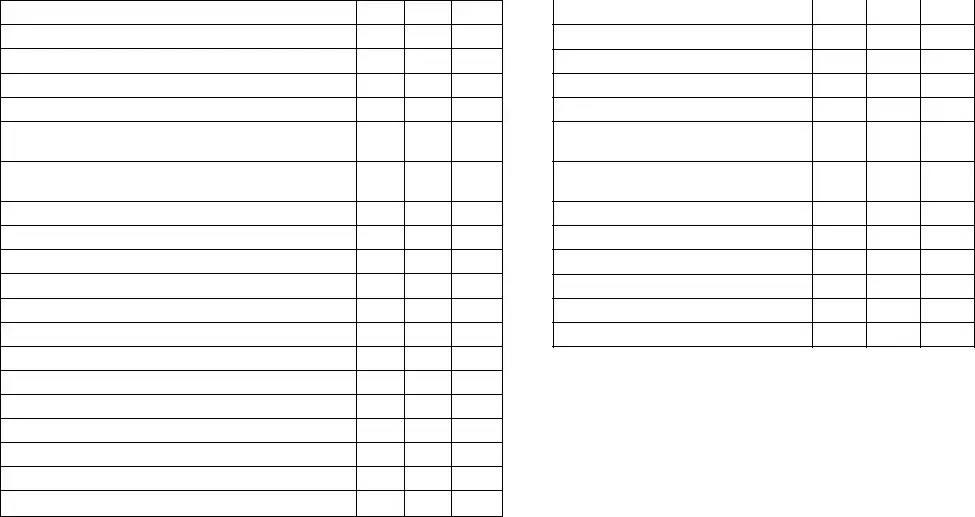What is the purpose of the Pre Use Inspection Checklist Form?
The Pre Use Inspection Checklist Form is designed to ensure that all equipment, particularly mobile cranes, are thoroughly inspected for safety and operability before beginning work. By completing this checklist, operators can identify any potential issues early on, helping to prevent accidents and ensure a safe working environment.
Who is responsible for completing the checklist?
The operator of the mobile crane is responsible for completing the inspection checklist. They must carefully review each item, noting the condition of the crane and reporting any issues before beginning their work shift.
What should an operator do if they find a problem during the inspection?
If an operator identifies any item that fails inspection, they must make a service request for repairs. This immediate action is crucial to maintain safety and prevent further complications during operations.
What are some key items that are checked on the checklist?
The checklist includes various visual inspections such as checking fluid levels (engine and hydraulic), ensuring no leaks are present in the hydraulic and air systems, and verifying the condition of the tires and boom. Additionally, components like wire ropes, blocks, and safety guards are inspected for damage or wear.
Is it necessary to keep the checklist on the crane during work?
Yes, the completed checklist must remain on the crane throughout the workday. This practice ensures that any crew member can refer to it as needed for safety verification and compliance.
What happens to the checklist after the work is completed?
After the work is completed, the operator must forward the checklist to the equipment custodian. This step ensures that all inspections are documented and that any necessary follow-up actions can be taken regarding the equipment’s condition.
What items are included in the operational inspection portion of the checklist?
The operational inspection focuses on key functions such as checking whether the main and auxiliary hoist controls are functioning correctly. Additionally, it verifies that important indicators, like the load moment indicator and various gauge readings, are operational and in good working condition.
How can an operator effectively use the checklist?
An effective use of the checklist involves a systematic approach where each item is thoroughly checked and marked. Operators should take their time to ensure all items are evaluated accurately, ensuring a higher safety standard for all personnel involved.

